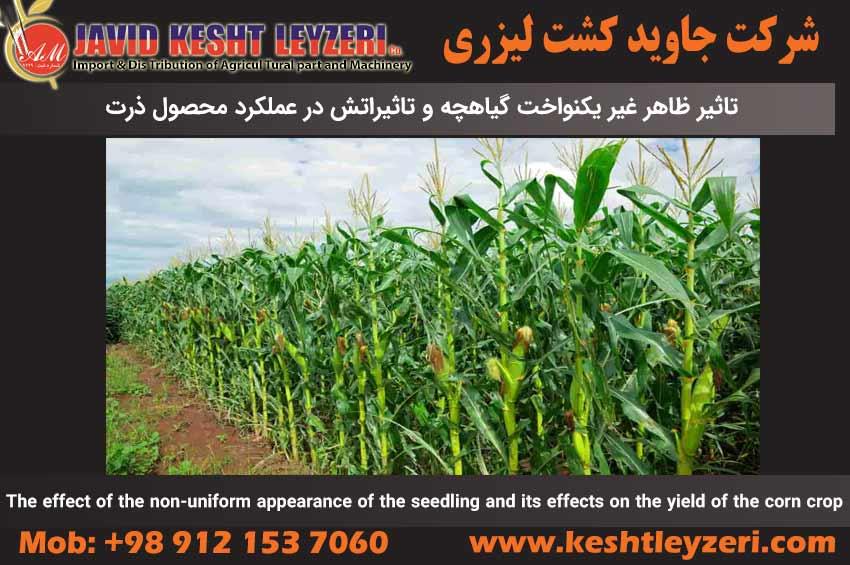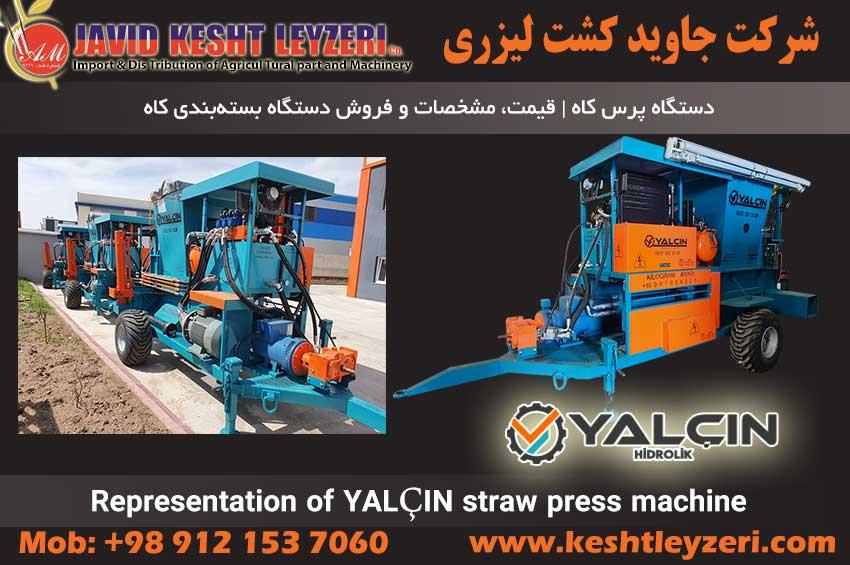
The effect of the non-uniform appearance of the seedling and its effects on the yield of the corn cr
javid keshtleyzeri Co.ltd
What are the causes of non-uniform emergence of corn seedlings?
What effect does the difference in soil moisture have on the uniform emergence of corn seedlings?
What effect does the difference in soil temperature have on the non-uniform emergence of corn seedlings?
What are the other effects of non-uniform emergence of seedlings in corn yield?
What is the effect of non-uniform germination on corn yield?
What are the effects of non-uniform emergence of seedlings on corn yield?
What are the effects of reducing planting density on corn yield?
How to manage non-uniform germination of corn plants?
Recommendations to prevent non-uniform emergence of seedlings
In the following, the above questions will be fully answered.
What are the causes of non-uniform emergence of corn seedlings?
When the soil or weather conditions are not suitable for corn planting, the seedling may appear unevenly. Although a complete green surface may eventually be achieved, plants may have appeared at different times. This article examines the effective factors in the non-uniform emergence of corn seedlings and measures the impact of the non-uniform green surface on the final yield of the corn crop. In addition, recommendations for managing non-uniform green surfaces and suggestions for achieving a uniform appearance are provided. In the rest of this article, it examines the factors and effects of non-uniform seedling emergence on corn yield.
What effect does the difference in soil moisture have on the uniform emergence of corn seedlings?
The non-uniform appearance of corn seedlings is usually caused by changes in soil moisture levels at the time of planting or after. The moisture required for seed germination may not be provided deep in the soil in some parts of the field. The existence of moisture differences in the depth of the soil due to the type of soil and topography may be different in a field. A seedbed full of fertilizer and soil in unsuitable conditions (high humidity) can cause an imbalance in moisture absorption by seeds and soil and cause some seeds to not germinate.
In most cases, uneven germination in corn fields is caused by seeds being planted in dry soil that do not germinate until the next irrigation or rainfall, which may occur several weeks after planting. For this reason, some plants may be taller and shorter than each other, and this difference is directly related to the time of sowing the seeds and receiving enough moisture for germination. The time of emergence of seedlings may be different in different areas of a field, row by row or plant by plant.
What effect does the difference in soil temperature have on the non-uniform emergence of corn seedlings?
Non-uniform soil temperature can also cause heterogeneity in maize seedling germination, especially when planted early or in fields using low tillage systems. If the depth of planting the seeds is different or if the soil in the fields is different in terms of type and topography, the temperature of the soil may also be different at different depths. Also, if residues from the previous crop are not evenly distributed in low tillage systems, seeds planted under heavy plant residues or deeper than usual will be exposed to cooler soil temperatures and will generally germinate several days later than seeds planted under They are planted in bare soil or at less depth, they germinate. The negative effects of variable soil temperature are particularly significant when the seed temperature is close to the critical threshold of 10°C. Small fluctuations in soil temperature of 10°C can significantly affect germination.
What are the other effects of non-uniform emergence of seedlings in corn yield?
Soil compaction, damage from herbicides, insects or disease may also cause non-uniform appearance of corn seedlings in the field. Finally, the non-uniform appearance of corn seedlings occurs when corn producers compensate for the lack of seedlings by filling the existing planting density instead of replanting in damaged fields.
What is the effect of non-uniform germination on corn yield?
Competition between larger and early corn seedlings reduces the yield of smaller and late seedlings. In order to measure the yield reduction caused by non-uniform density in the field, researchers have investigated the effect of non-uniform density on yield by simulating different crop density and using different crop dates.
In order to create a non-uniform emergence of seedlings in the field, cultivation was done with full density (70 thousand plants per hectare) and reduced density on three planting dates. Timely cultivation, 10-day delayed cultivation (medium cultivation) and 20-day delayed cultivation (late cultivation) were performed. In order to determine the effect of density and non-uniform emergence of seedlings on corn yield, different patterns of delay in germination using 1.4, 1.2 and 4.3 late emergence of seedlings in a fixed planting density (70 thousand plants per hectare) were used. Checked. To clarify the effect of reducing density, reduced density corresponding to the same proportions, 1.4, 1.2 and 4.3, was also created in the field.
What are the effects of non-uniform emergence of seedlings on corn yield?
It is clear from the graph that 10 days planting delay (average delay) caused 5% reduction in yield. Also, the delay of medium planting and the late emergence of 3.4 sprouts caused a 7% decrease in corn yield. But in cultivation with 20 days delay (late cultivation) and full density, the seedlings lost 12% of the yield. It is worth knowing that late cultivation and non-uniform emergence of seedlings in the field has led to a 22% decrease in yield. Therefore, it is clear that timely cultivation, even if it is accompanied by non-uniformity in the emergence of seedlings, is still preferred over delayed cultivation.
The effect of non-uniform seedling emergence on the yield of two corn cultivars in seven different regions has been investigated. Maize yield reduction based on percent relative to maximum yield (5.12 t/ha) with tar
Timely planting ice, uniform emergence, and full density (70 thousand plants per hectare) are calculated.
What are the effects of reducing planting density on corn yield?
Reduction of 1.4, 1.2 and 4.3 density has caused 10%, 30% and 51% reduction in corn yield, respectively. The importance of timely seedling germination compared to the loss of seedling and the reduction of planting density can be seen from the comparison of different conditions in the graph. According to this graph, when 1.4 plants were planted 20 days late, the yield was 90%, but if the same proportion of seedlings were lost, the yield would still be 90% (red columns of the graph). This shows that the presence of late plants does not contribute to the overall performance. However, the situation will be different when comparing the late planting of 1.2 plants and the loss of 1.2 seedlings. In this case, the yield of the field with 1.2 late seedlings is 10% higher than the yield of the field where 1.2 of the seedlings are lost (green columns of the graph). It seems that the reason for the difference in the effect of late seedlings in the mentioned conditions is the ability of the corn plant to use the empty space in the field. When 4/3 of the seedlings are established on time, they will be able to expand and fill the space, so there is no need to do anything for the remaining 1/4. But the corn plant has not been able to compensate for the lost 1.2 seedlings, and in this situation, it will be necessary to take measures to compensate for the loss of yield.
How to manage non-uniform germination of corn plants?
The first step is to determine the general pattern of non-uniform germination. This pattern will vary from section to section of the farm and within each farm. It is imperative that you manage each field according to the most common germination pattern on its surface.
Preservation of seedlings with time delay
If the seedlings have grown with a delay between 10 and 15 days, protect them from burial during cultivation.
If 1/2 of the seedlings have germinated after 20 days delay, keep them.
If less than 1/4 of the seedlings have germinated in 20 days or more, keeping them will not be important because they will not have much effect on the final yield.
Necessity of employment
If the delay in seedling germination is less than 15 days, Vacari will not have much effect on the final yield (5%) except for the late germination pattern.
Vacari may result in a 10% increase in final yield if 1.2 or more of the seedlings are 20 days or more late in germinating. To decide on vaccination in this situation, compare the economic return of a 10% increase in yield with the costs required for vaccination as well as the risk of germination problems in vaccinated seeds and make the necessary decision.
Replanting or replanting?
In a field with low seedling density (loss of 1.2 or more seedlings), depending on economic conditions, you can either replant or fill the existing density with vacancy and accept the uneven emergence of the resulting seedlings.
If 1.2 or more seedlings have been lost 15 days after the initial planting, it is better to carry out repotting, because repotting and filling the existing density, especially if repotting is done at fairly even intervals between the rows of primary seedlings. , would probably be better. Of course, 15 days after initial seeding is usually too early to determine final density.
If 20 days or more after the initial planting, 1.2 or more seedlings have been lost, it is better to plant the land again if there is enough time for replanting. In this case, the yield potential of replanting will probably be 10% higher than that of replanting. Check this possible increase in yield against the costs of replanting including tillage, seed cost, etc. and make the final decision.
Hints:
Probably, the assessment of non-uniform seedling emergence using the difference between phenological stages will be more accurate than the time difference between seedling emergence. In this study, planting delays of 10 to 20 days caused a similar delay in the phenological stages of seedling emergence. However, the delay in seedling emergence may vary in different environments, and the actual time delay may not be known. In this study, there were 4–5 visible leaves (2–3 visible leaf whorls) on the early plants at 10-day delayed plant emergence. When culture was delayed for 20 days, 7–9 leaves were visible (4–5 leaf whorls were visible) in the early plants.
Also, plant density can affect the relative performance of seedlings that emerge later. In another study, it was found that in a plant density of 75,000 plants per hectare, where the planting of half of the seedlings was delayed by 15 days, late planting plants contributed much less to the final yield of the field than another field with the same conditions and density. They planted 60 thousand plants per hectare.
Therefore, fields with non-uniform crop density will usually have a lower yield than fields with uniform crop density due to direct competition between plants in two different growth stages next to each other. Because older plants usually outcompete younger plants for light, water, and nutrients. Also, late plants have higher seed moisture when harvested, which can lead to harvesting seeds with different moisture levels and increase seed damage and drying costs. In addition, late plants are more susceptible to weed due to their smaller stems and fewer lateral roots. It will also be difficult to adjust the combine to harvest early and late ears. The mentioned problems will be much less if the delay between the emergence of seedlings is up to 10 days, but when this delay reaches 20 days, these problems are serious.
It will be more.
Recommendations to prevent non-uniform emergence of seedlings
Due to environmental factors that corn producers cannot control, corn may emerge unevenly. However, the following management practices can help you avoid uneven seedling emergence and its effects on corn yield.
Avoid excessive tillage operations that cause drying or compaction of the seed bed. Remember that plowing in soil with high moisture causes the earth to become lumpy, which is one of the reasons for the uneven appearance of seedlings. Check your seed depth when planting in several areas of the field. If the contact between seed and soil is poor or the seed depth is not uniform, adjust the seeding nozzle or the seed pressing wheel. Changes in secondary tillage operations may also improve soil conditions for more uniform planting. If you use low tillage systems and a significant part of the previous crop residue remains on the soil, make sure that the cultivation machinery distributes the plant residue cover evenly after planting. Use the recommended amount of herbicide to avoid damaging the corn. After planting, monitor the appearance of corn closely and if the corn prevents uniform emergence, use a rotary cultivator to break the corn.






